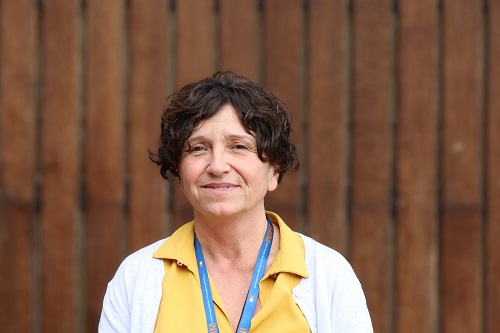
February 23rd, 2023 - Press notes
A collaborative effort led by Dr. Anna Bigas, from the Hospital del Mar Research Institute and Josep Carreras Leukaemia Research Institute, found that the population of haematopoietic stem cells (HSC) responsible for the generation and self-renewal of the blood and immune system keeps a long-term undifferentiated state thanks to its ability to physically block its own NOTCH1 receptor through the expression of JAGGED1, a specific NOTCH activator. Authors hypothesise that the lack of this previously unknown mechanism might be the cause for the poor performance of current approaches to generate haematopoietic stem cells from induced pluripotent stem cells for regenerative medicine.
We all originate from a single cell, that multiplies over and over again to produce every tissue in our body and keep them healthy and working. This has two consequences: first, many of these cells must change, differentiate, to develop the specific functions of each tissue. Doing so, they lose the capacity to become other types of cells. Second, some cells must remain undifferentiated to regenerate and heal the tissue when needed. This is especially important in the blood, a tissue that continuously regenerates.

Dr. Anna Bigas
The question is, how does a cell know when to keep undifferentiated and when to move on? The simple answer is they tell each other. There is an intense crosstalk between cells in a tissue, and most of it comes from interactions through a protein on its surface, called NOTCH1. In some cells, when this protein binds to their ligands onto other cells, the message is to differentiate. Scientists have been trying to understand how undifferentiated cells ignore all this chatter while expressing NOTCH1.
In a recent paper published at the top journal Nature Communications, a team led by Dr. Anna Bigas, group leader at the Josep Carreras Leukaemia Research Institute and the Hospital del Mar Research Institute, found that the nondifferentiated Haematopoietic Stem Cells (HSC) block their own NOTCH1 protein with the protein JAGGED1, effectively isolating themselves from their cellular background. The findings have been possible thanks to the use of state-of-the-art technology, especially single-cell RNA sequencing and new imaging of protein interactions.
Also, the results of the analysis found that the interactions between NOTCH1 and JAGGED1 were far from being spontaneous, but a part of a predetermined cellular pathway. Indeed, they found a third protein, FRINGE, that fine-tuned the interacting regions of NOTCH1 and JAGGED to improve their contact areas and facilitate the binding.
Taken together, the reported findings could explain why the efforts to grow a large population of stem cells in vitro for regenerative medicine fail to yield cells with the capacity to self-renew and differentiate in the long-term. Understanding and mimicking this cellular mechanism can pave the way for new advances in generating Hematopoietic stem cells.
The research team was spearheaded by Dr. Roshana Thambyrajah, at the Bigas-Espinosa Lab, and counted with the collaboration of Dr. Eduard Porta and Dr. Manel Esteller's groups at the Josep Carreras Institute, the Wellcome-MRC Cambridge Stem Cell Institute, the University of Manchester, Centro Nacional de Investigaciones Cardiovasculares and the Bellvitge Institute for Biomedical Research. The work is also a collaboration with the Spanish networks CIBERONC and CIBER-BBN.
Thambyrajah, R., Maqueda, M., Neo, W.H. et al. Cis inhibition of NOTCH1 through JAGGED1 sustains embryonic hematopoietic stem cell fate. Nat Commun 15, 1604 (2024). https://doi.org/10.1038/s41467-024-45716-y


 This site complies with the HONcode standard for trustworthy health information:
This site complies with the HONcode standard for trustworthy health information: Parc Salut Mar
Passeig Marítim 25-29 Barcelona 08003
See location on Google maps
Phone: 93 248 30 00 · Fax: 93 248 32 54
Information request
© 2006 - 2024 Parc de Salut Mar · Legal notice and Privacy Police | Cookie Policy | Accessibility